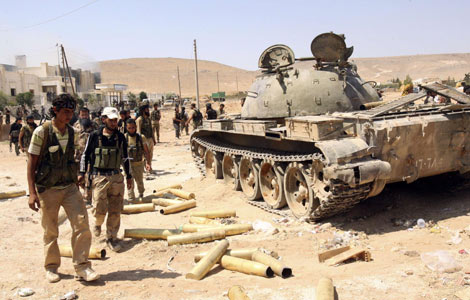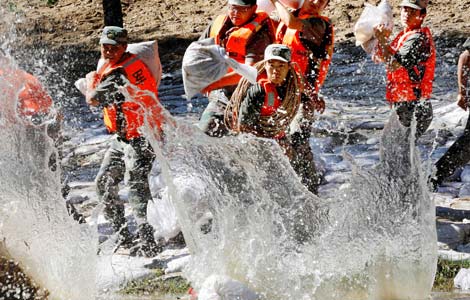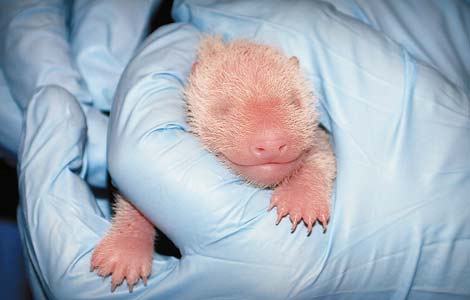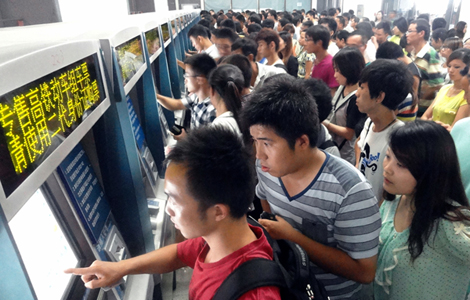
TOKYO - Japan's Nuclear Regulation Authority (NRA) announced Wednesday they have officially raised the level of severity of the radioactive water leak at the crippled Fukushima nuclear power plant to level three.
The NRA determined that the current crisis represents level three on the International Nuclear and Radiological Event Scale ( INES), which describes the crisis as a "Serious Incident," involving severe radioactive contamination with serious health affects on the local population.
The nuclear regulators raised the level of severity from level one, which is described as a "nuclear anomaly."
The raising of the severity level Wednesday marks the highest crisis level since the reactors melted down in March 2011, which was classified as level seven on the INES scale, the highest level of severity and the same grade as the 1986 Chernobyl disaster.
The NRA opted to raise the level following admissions from the stricken plant's operator, Tokyo Electric Power Co. (TEPCO), that 300 tons of highly-radioactive water had leaked from a steel storage tank and into the Pacific Ocean through drainage ditches.
The Vienna-based International Atomic Energy Agency (IAEA) supports the revision and stated that the tank leak can be assessed separately from the Fukushima Daiichi crisis as a level 3 incident, according to a statement from Juntaro Yamada Wednesday, a spokesman for the NRA.
However, the IAEA stressed that it was important that the dissemination of information to the government, Japanese citizens and international nuclear regulators from Japan must be unequivocal.
Delays and misrepresentations of radiation data by both TEPCO and the government, since the tsunami-triggered crisis occurred in March 2011, have led to a strong backlash from international nuclear regulators, and diminished trust in the embattled utility' s disclosure of accurate information.
"It is important that the information required to properly determine the INES rating against all relevant criteria is collated, and that a defensible rating is determined," the IAEA said Wednesday.
NRA Chairman Shunichi Tanaka told a nuclear committee Wednesday that it was of paramount importance to ensure that accurate information is passed on to the relevant local and global authorities and that environmental assessments were also disseminated publicly in an accurate and timely manner.
The embattled utility has been struggling to deal with the high volume of highly-radioactive water building up and being stored at the Fukushima Daiichi nuclear facility site, located 250 km northeast of Tokyo.
The operator has stored hundreds of thousands of tons of the contaminated water in huge tanks at the site and currently there are 1,000 tanks, of which 93 percent are already at full capacity, TEPCO said.
Some 400 tons of groundwater flow into the site each day, and TEPCO also pumps large amounts of water through the buildings to keep the crippled reactors cool. The massive volumes of water involved, some nuclear experts have said, are more than the utility can handle and government and possible global intervention is long overdue.
TEPCO has been unable to locate the source of the leak and the NRA and government officials have blasted the plant's operator for failing to maintain the structural integrity of the leaking steel tank and fears are rife among industry experts that similar leaks could occur in more tanks in the future.
Japan's Chief Cabinet Secretary, Yoshihide Suga, said Monday that it was intolerable to allow radioactive water to flow freely from the plant and into the Pacific Ocean and blamed TEPCO for its poor management of the tanks.
Japan's top government spokesperson said that it was "extremely regrettable" that the incident had occurred and said the government will do all it can to resolve the problem "as soon as possible."
TEPCO, confirming Suga's inference of negligence and grave ineptitude, said Tuesday that the leak may have started around July 9. But TEPCO said they only noticed signs of leakage on August 19, more than a month later.








